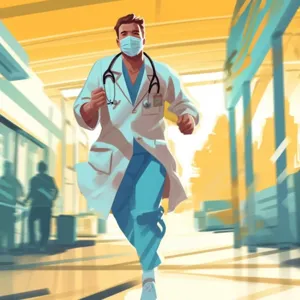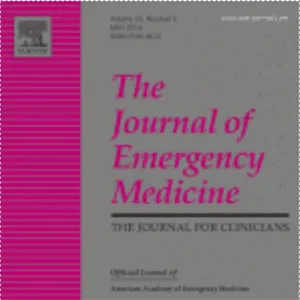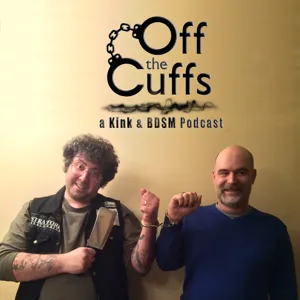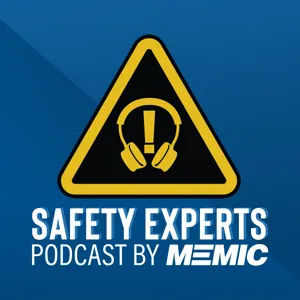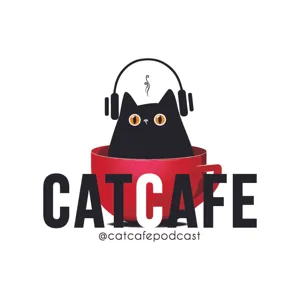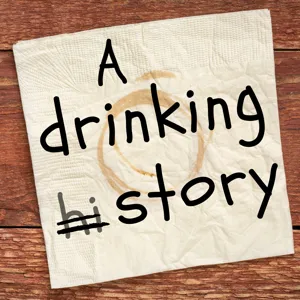According to the Pew Research Center, during July 4 and 5 more than 90,000 people visit hospital emergency rooms for treatment of injuries sustained during the holiday. This episode will cover safety issues that are not just workplace related, and explore the Top 5 injury causes that center around the 4th of July holiday, as well as share some tips on how to not become a statistic this summer.
Peter Koch: [00:00:04] Hey there, listeners, this is Peter Koch, host of the MEMIC Safety Experts podcast. This podcast is dedicated to discussing, describing and even debating safety across all industries and applications with industry leaders, top executives and safety experts right here at MEMIC. Just because it's legal doesn't mean it's safe. That's a statement from Glenda Lynch, from a flyer that she created around firework safety after her son died of injuries sustained when a firework mortar went off prematurely. Fireworks are one of the top five causes of injuries around the Fourth of July holiday. And this story is a particularly tragic one. So in today's episode, I'm going to take a slightly different tack and cover safety issues that are not just workplace related and explore injury causes that center around summer and the Independence Day holiday, as well as share some tips on how to not become a statistic [00:01:00] this summer. So let's jump right into it. According to the Pew Research Center, during July four and five, more than 90,000 people visit hospital emergency rooms for treatment of injuries sustained during that July 4th holiday. In his July 2019 article, Drew DeSilver writes that the average daily number of E.R. visits across June, July and August hovers around 40,000 or less than half the average of the Independence Day holiday visits, even the Memorial Day and Labor Day holidays that don't compare with the average totals for July four and five.
Peter Koch: [00:01:37] The Elite Care E.R. center out of Texas published an article that highlighted the top five causes of injuries around the July 4th holiday. They are, according to them, outdoor grilling and cooking, swimming and boating, fireworks and last but most fatal car crashes. So let's go through those and start in reverse order. Tackling outdoor cooking and grilling first. The National [00:02:00] Fire Protection Agency, or NFPA, states that 64 percent of all American households own at least one outdoor barbecue grill or smoker. And between grease fires leaking propane, spilled charcoal and the misuse of flammable liquids. There are lots of ways someone could get hurt when they're grilling and chilling. Add to that, adult beverages and other distractions. And it's no wonder that outdoor cooking makes the top five injury causes list. Here are some stats from the NFPA. July is the peak month for grill fires and averages 18 percent for the entire year. July is followed by June with just 15 percent and May with 13 and then August with 12 in 2014 through 2018 fire departments went to an annual average of 8,900 home fires involving grills, hibachi or barbecues. And in that same time frame, an average of nearly 20,000 people [00:03:00] per year went to the emergency room because of injuries involving grills. Nearly half or 9,500 or 48 percent of those injuries were for thermal burns, including both burns from fire and from contact with hot objects. So let's look at a couple of tips that can keep you safe this summer when you're grilling outside.
Peter Koch: [00:03:21] First, outside, any grill that generates heat from combustion, propane, charcoal, wood pellets, whatever should be used outside. Yes, outside, even when it's raining. Never, ever use your grill in the garage shed or the kitchen. Keep it well away from the house, out from under the eaves and away from other combustible materials like the deck railing or furniture. Second, the grill top and sides get hot, so keep the kiddos, pets and other unpredictable partygoers away from the grill. I remember two different gatherings where people at the party unintentionally mixed [00:04:00] it up with the hot sections of the grill. Both times involve the dog and both were Rube Goldberg-esk occurrences. So in the first instance, the Unleashed family dog bumped into the walker of the grandmother. The grandmother toppled over into the people that were helping her get to a seat on the deck. One of those stumbled into the six year old that was walking near the grill, who then fell into the grill where hot water from the pot of boiling corn was on the side burner, which eventually sloshed out onto his arm and his face. Not a great day. The second instance was a leash dog that took off after a ball, the trailing leash wrapped around the leg of the charcoal grill, dumping its contents onto the deck. The coals caught the grease from the food on fire, which ignited the wood of the deck. [00:04:48] And the injury occurred then when the person with the fire extinguisher ran through the sliding glass door coming out of the house onto the deck, you just really can't make it up.
Peter Koch: The next [00:05:00] safety tip involves two steps, but first, I'll explain why these steps are important. I visited a friend a number of summers ago for what I had assumed to be a barbecue. When my family and I arrived, my friend was in the process of removing the dripping, charred and blackened husk of the gas grill from his deck. Seems he had lit the grill to preheat, then went into the house to get whatever it was he was going to serve and then promptly got distracted. When he returned, the grill had black smoke roiling out of it and flames shooting out from every opening. He pushed open the lid with the hopes of putting the fire out with long tongs, which then promptly intensified the fire. He finally put it out with copious amounts of water from the hose. I expect that you know what happened and maybe it's even happened to you. Seems that the heat from the closed grill during that extended pre-heat time ignited all of the leftover grease in the bottom of that grill and opening the lid, it just fanned the flames. It's a good thing the propane [00:06:00] didn't explode.
Peter Koch: [00:06:02] The moral of the story, keep your grill clean by removing grease from the inside of the grill and from the trap trays below. Then never, ever leave your grill unattended when it's on. The last grilling safety tip is always, always keep the lid of the grill open when the lighting it. I don't have a personal story to share, but there are plenty of people out there who have experienced the woosh and subsequent loss of facial hair or worse, when the un-ignited gas trapped under the closed lid finally reaches a mixture that will support combustion. Keep these in mind when cranking up the grill this summer, and there's a good chance you won't contribute to the summer injury statistics. Speaking of stats, though, statistically boating and swimming, the next two on the list are very safe. But both activities can cause injury if you don't take precautions before and during enjoying the water. The most common causes [00:07:00] of accidents when boating or swimming are participating at a level above your ability. Intoxication, distraction and in particular with boating, speed. Though boat speed can have a negative effect on swimmers when they share the same waterway. The Minnesota Department of Natural Resources provide boaters some great safety reminders. So you want to check them out on their website or I'll go through some of them here. So first and foremost is to leave the alcoholic beverages on the shore and be a sober boater.
Peter Koch: [00:07:31] Operating a boat is the same as operating a motor vehicle. Don't drink and drive applies on the water as well. This leads to a similar rule for boaters, distractions of any kind can lead to collisions or other boating accidents, phones and passengers can be an even bigger distraction on the water than they are in the car. Operators and pilots must keep their attention to the waterway, put the phone down and have a spotter when towing skiers, [00:08:00] tubers or other devices. The next tip is apropos as we open up around covid and they say to practice social distancing when boating, they mean it from a stop the spread perspective. But I think this message has larger implications. Think about it. Nothing good can happen if your boat tries to occupy the same physical location as another object or person. Consider the following. Give other boaters space, keep up good right away practices and don't try to squeeze in. It's hard to crash into someone or something if you keep your distance. The next tip is for when things go wrong on the water, and that is to wear a life jacket. A wearable life jacket can save your life, but remember only when you wear it. The U.S. Coast Guard makes the following recommendations around life jackets and they're pretty important. So all recreational vessels must have a U.S. Coast Guard approved life jacket for each person on board.
Peter Koch: [00:08:56] That means not just one for the kiddos, but one for everyone on [00:09:00] board. No sharing. The second is federal law requires that when a vessel is underway, children under 13 years of age must wear their life jacket. There are exceptions for when they are below deck or within an enclosed cabin, but for the most part, when they're on the boat, they need to be in a life jacket. Though it's not always required by law, a life jacket should be worn at all times when the vessel is under way because, you know, if you go overboard or something happens in an emergency, you're probably not going to be next to the life jacket. So it's always best to have it on. And that brings us to the fourth tip. Wearable lifejackets must be readily accessible, and you must be able to put your life jacket on in a reasonable amount of time in an emergency. They should not be stowed in plastic bags or in locked or closed compartments or have other gear stowed on top of them. They really need to be accessible. Own your wake is the last tip on the list [00:10:00] of boating safety tips here, and it crosses over to the safety of others and swimmers, too. So when operating a vessel that generates a wake, be aware of the proximity of other boaters, swimmers and paddlers and some of the effect that your wake may have on them.
Peter Koch: [00:10:15] Swimmers and paddlers have some responsibility here as well, though we all need to share the resource. So just because you can swim or paddle in a particular area or at a particular time, it doesn't mean that you should keep in mind that from the cockpit of a motorized vessel or sailboat, a swimmer or a paddler is a really small target and is easily missed. As for swimmers, while the old adage wait for an hour before swimming, after eating may not always be necessary, some precautions to prevent drowning are the Red Cross, through which I took my own swim lessons when I was a kid and then went on to become a certified lifeguard instructor in my teen years. They have some excellent advice to [00:11:00] prevent drowning. They call it the Circle of Drowning Prevention, which describe the different layers essential to prevent drowning and helps us plan ahead for any aquatic activities. So first in that circle is to learn swimming and water safety skills before you get in or around the water. This is all about being water competent and your competency depends on the environment that you're going to be in. You'll need different skills if you're floating in a shallow backyard pool versus recreating or swimming in the ocean or cold mountain lake. According to Water Safety USA, which is a coalition of Red Cross and other aquatic safety groups, necessary basic skills should cover the following.
Peter Koch: [00:11:42] You should be able to step or jump in water over your head, then turn around or over and orient towards safety. Then you should be able to float or tread water and then at the very least swim 25 yards to safety using controlled breathing and then exit [00:12:00] the water. They also say that you should be able to perform these skills, whether you're in a swimsuit or you're fully clothed. That's harder than it sounds. So maybe you should practice. The second is to be water smart. This covers a whole slew of points, many of which are common sense, but all can be found missing in any drowning or near drowning news story. I'm not going to list them all, but honestly, as a former lifeguard, a few do bear repeating. So first, like with anything else, know your limitations. Most drowning scenarios occur when someone gets in and pardon the pun, over their head, they panic and then become too exhausted to continue keeping themselves above water. The second is to know your environment, understand the topography, temperature and the currents in the area that you're swimming. Even a backyard pool can have a shallow and a deep end that can be the nemesis for the non-swimmer. And then last in this list is never [00:13:00] swim alone. If you think you can rescue yourself, really think again while it's possible your preparedness and the environment will dictate your success.
Peter Koch: [00:13:10] So when I was in my teens the same summer I was taking a lifeguard class, my parents took my brother and I to a water park. There was a really cool water slide that we were trying to get our dad to go on with us. We finally convinced them and it was it was superb. The slide followed a number of drops and loops and then finally emptied into this deep pool where you had to swim toward the shallow end and then finally walk out. So I go down the slide. I remember landing in the pool and then taking a few strokes ahead, turning around and watch for my brother and my dad. So they shot out of the slide one right after the other. Splash, splash. My brother popped up and swam to the side and then started heading towards the shallow end. My dad, however, stayed under a little longer than I think he should have and then finally struggled to the surface. So I went out to him and then after helping him to the shallow end, [00:14:00] I found out that he didn't know how deep the pool was and thought that he could just float his way to the shallow end and then stand up. When they hit the water, he got all disoriented. Then he panicked. And I learned then that he had never figured out how to swim. And all those years, the last part of water competency is to be ready to help others.
Peter Koch: [00:14:20] This is essential whether recreating in the backyard pool or fishing off the dock or pier, you don't ever want to have that sick feeling in the pit of your stomach of not knowing what to do when your co-worker friend or your father is struggling in the water. So be prepared, go take a class, try to figure it out, have stuff with you and be prepared so that you know what to do if someone falls in and they need your help. If you want more great information about boating and swimming safety, check out the resources at USCGBoaters.org and the water safety resources at RedCross.org. So no list of Fourth of July injury causes [00:15:00] would be complete without fireworks. You may think that many of the injuries caused by fireworks are the result of mishandling or horseplay. Not all of them are. Some happened to recreational users who might not understand all of the implications of what they're using. And some even happened to professionals. Many years ago now, I remember well when I was planning for this podcast, I was remembering some of the experiences that I had with fireworks. And many years ago now, I recall attending a fireworks display. One summer, bunch of friends and I were on the beach and the fireworks were being launched from a raft out in the middle of the lake.
Peter Koch: [00:15:38] During what I thought was going to be a normal pause in the display, I looked down from the sky to the water just in time to see the mortars being launched out toward the other side of the lake, streaking across the water. In the glow of that fire, you could see the technicians jumping into the water. Well, it turns out that one of the racks that [00:16:00] held the firework launch tubes had become unsecured and had tipped over in the process of trying to reload and launch. No one was hurt, thank goodness. But it wasn't until years later that I thought about the implications of what would happen if that wreck had flopped over the other way and launched toward the beach. We all missed serious injury that day and they were set off by professionals. Tragedy and fireworks can really go hand in hand, and especially in the hands of untrained and unexperienced people. The quote at the beginning of the podcast from Glenda Linge Just because it's legal doesn't mean it's safe rings true when it comes to fireworks. Her son Shane was with his dad at a backyard fireworks show when a mortar, which he had loaded into the launch tube, exploded in his face. The news reports explain that the impact shattered his forehead, cracked his skull in half, and the heat from the firework burned his brain. [00:17:00] Shane never regained consciousness, and they had to make the decision to take him off life support.
Peter Koch: [00:17:08] Glenda became an advocate for firework safety and regulation after that fatal accident. They learn from the investigation that the premature ignition of the fireworks could have been caused from either static electricity or possibly even embers left in the tube from the previously launched mortar in the hands of inexperienced people or unqualified people, fireworks can be dangerous and they can be dangerous at many different levels. Injuries occur from small burns to life threatening injuries to fatal injuries. The Consumer Product Safety Commission reminds us that even if fireworks are illegal in the state that you're in, all fireworks come with risk. Their data shows that 62 percent of the 90 100 fireworks related injuries in 2018 occurred in the months [00:18:00] surrounding the Fourth of July. So that would be June 22nd through July 22nd, 62 percent, even children under five are part of that statistic and half of their firework related injuries are from sparklers. Fun fact. Did you know that sparklers, even the ones that you can buy at the convenience or big box store, burn around 2,000 degrees Fahrenheit. That's hot enough to melt some metals, so keep them away from the kiddos. The CPSC gives some great tips around fireworks safety. So check them out, make sure consumer fireworks are legal in your area before buying or using them. And as a consumer, never use or make professional grade fireworks.
Peter Koch: [00:18:43] Now, as an aside here, fireworks packaged in brown paper are often made for professional displays and are not for consumer use. So that's a pretty big hint if you're looking for fireworks to use in your backyard. Next, never place any part of your body directly over a fireworks [00:19:00] device when lighting the fuse always move to a safe distance immediately after lighting the firework. Never point or throw fireworks at another person or towards an occupied area, always light fireworks, one at a time, and then move away from them quickly. Keep a bucket of water or a garden hose handy in case of fire or other problem. Always soak misfired fireworks with water thoroughly before throwing them away and never try to relight them. After fireworks complete their burning douse the spent device with plenty of water from a bucket or hose before discarding the device to prevent a trash fire. The bottom line is all fireworks carry risk. Know, and prepare to control the risk before using them. Or just go to watch the professionals shoot them off. They can be a beautiful display and a fun time with your friends and family.
Peter Koch: Let's take a quick break and reflect this Fourth [00:20:00] of July and both the success and struggle that we have had as a nation since independence and political separation from Great Britain was declared in 1776 and how we've been shaped by them. This is a shout out to all of the workers that make it possible for Americans to enjoy the Fourth of July holiday. [00:20:19] They are the reason your favorite restaurant, bar, hotel, resort, state or national park campground or a convenience store are open on those days. The rest of us have off. I'm not going to list all of the occupations and industries here as there are far too many. And I know that I'll miss one. But let's not forget the police, fire, EMS warden and ranger teams that respond when our recreation day goes wrong. If you want to do something for the countless workers that have and continue to work to keep the doors open and the lights on in those establishments that we like to frequent as a customer. Start by saying thanks and as an employer, start by keeping them safe. They all [00:21:00] need to go home to their family and friends at the end of the day. If you need a place to find safety resources, then you can check out the MEMIC safety director at www.MEMIC.com/WorkplaceSafety. Now, let's get back to today's episode.
Peter Koch: Last on the list are car accidents around the Fourth of July, and I would like to welcome Randy Klatt, director of region two loss control here at MEMIC as our expert on transportation exposures to help me dissect some disturbing statistics around driving fatalities. So thanks for being here, Randy. I wanted you to help me understand some of the fatality statistics that the National Safety Council has put out. [00:21:44] They have a website or a Web page called Holiday Traffic Fatality Estimate. And here you can go through any of the big holidays. So New Year's Day, Memorial Day, Labor Day, Thanksgiving, Christmas. And they have Independence Day or the Fourth of July. And that's what we're talking about here. And [00:22:00] they're talking about four hundred and eighty-two people may die over the Independence Day holiday, which goes this year from Friday through Monday. They're looking at like three point two five days, which is where they get the average over. But that seems to be a fairly substantial amount of fatalities that are happening just over the road. Now in the podcast, before I've been talking about other areas where injuries can happen and fatalities happen, but certainly none of the other activities grilling, using fireworks, swimming and boating are coming up with the same number of fatalities that the National Safety Council is estimating may happen over this Fourth of July weekend. So let's talk about those stats for a little bit and why they're important. And then let's get into some things that you can do to not become a statistic, because that's the whole point of this. We want people to stay alive during their holiday period. So let's talk a little bit about the stats.
Randy Klatt: [00:23:00] We [00:23:00] certainly do want them to stay alive Peter, and we also want them to remain uninjured. So we could talk about the nearly 500 people that are estimated to be killed on that holiday weekend. But you could add to that, oh, probably one hundred thousand injuries from accidents as well. Now, that's just mind boggling when you think about it. And of course, the real problem is most people don't think about it. They're using their car every day. It's something that especially in America, we rely on. And most every car has one person in it and there are millions of them on the road. And that's just what we do. And we don't really consider that it's probably the most hazardous thing that you're going to do in any given day. And of course, with the topic of this discussion, you had holiday weekend, summertime weather you had a little alcohol and maybe some long hours. And it's not surprising that those [00:24:00] estimates will rise. Also noted that the statistics were increased. Their estimate was increased slightly this year due to the covid pandemic shut down, relaxing this year. So unlike last year when most people were stuck at home, this is the first Independence Day weekend where we'll be out and about in more normal conditions. So they're not really sure what's going to happen.
Peter Koch: [00:24:26] Right. A lot of pent up expectations or desires that kind of get out and be in the world again, which is going to put a lot more traffic on the road and a lot more challenges. I think.
Randy Klatt: [00:24:37] I think you're right. And again, we take driving for granted. And I say everybody does it every day. Of course, that's not quite true. Some people don't. And there is a large percentage of the population that hasn't driven very much in the last year due to everything that's happened. And now they're going to be out there. Maybe they are taking the road trip to [00:25:00] someone's house or an extended weekend holiday somewhere. And they haven't been on the roads very much. And. Well, do you think we can get rusty at driving? Yeah, I think we can. It's operating a mechanical device, you know, a moving vehicle. So there may be an element of that, too. It's just, jeez, we haven't been out in traffic very much and we don't remember the way like we would if we'd driven it every day of the week. And, you know, there's going to be some of that sort of thing going on.
Peter Koch: [00:25:32] That's a really good point. I experienced that myself as we got back out into the field as loss control consultants. And some of my policyholders are quite far away. And I hadn't seen him in a while or been to their place of business in a while. And I'm making the trip for the first time and like, wow, this has been spent 18 months since I've been on this road. And now you forget kind of where you're going and where all your turns are and where you're going to be. And you end up maybe not [00:26:00] focusing so much on the road, but the map or the path that you're supposed to take. So you might miss some of the cues. You might miss a turn, panic a little bit more and possibly even make a wrong turn or try to get out of that wrong turn, get back into traffic when someone else is trying to pull up behind you. So you might not be rusty. The mechanics of driving like you still know where the gas pedal is and the brake pedal and the steering column and everything, but you might not know the path and that, as we've discovered before, when you add one more thing to think about in that complex process of driving puts us at substantial risk for making mistakes and actually being distracted not from a phone or from a conversation or for something else, but just by not knowing where the heck you're going.
Randy Klatt: [00:26:46] Yeah, I had a similar experience just yesterday, I went to a policyholder I hadn’t been to and a year and a half and at a particular intersection when I went by, I realized, holy cow, there's a building that wasn't there last year, you know, [00:27:00] huge brand new. And you find yourself kind of watching or gazing. Wow, that's interesting. Well, guess what? The vehicle's still moving at 35 miles an hour, and that's when things happen. You know, in my driver training and we've always talked about reaction time and, you know, how long it takes for a driver to react to what happens to perceive an issue and then actually do something about it. And how many feet per second you're traveling. And anyway, that's still applies. Physics doesn't go away. And so the distracted brain, that's a thing. It's a real thing. And it may be worse this year when you realize that, wow, there are a lot of buildings out there that weren't there last year or other things, highway construction and things like that, that we really have to be careful.
Peter Koch: [00:27:49] Certainly and some of that is going to, you know, take away from your schedule. Right. So not, you know, not realizing that, you know, we're out for the first time again, traveling someplace at [00:28:00] a distance and not knowing where all those construction stops are so used to take me two hours to get from point A to point B, and now it's going to take me two and a half hours to get from point A to point B, and people feel the pressure of not being someplace on time or meeting that deadline. So even that could be a challenge. And again, distracting.
Randy Klatt: [00:28:19] Right. And just imagine if over this three-day weekend, if we were to crash three major airline airplanes in this country. Imagine the outrage, the publicity, the media coverage, the government intervention that would happen. I mean, it would just be just a tremendous reaction to something horrible like that. Well, equivalent lives lost. That's exactly what's going to happen over this weekend and sadly enough, the National Safety Council's predictions over the years are freakily,[00:29:00] really accurate. So talking about five hundred people that are here now that might not be here after the weekend, and that's sad. So, yeah, let's do everything we can to prevent that to you, to your family, to your friends, to coworkers, to your staff if you have a chance to talk to them before the weekend. It's just it's a reminder. I know everybody knows how to drive and they'll get the eye rolls and whatever, but it's a real thing that too many people take for granted.
Peter Koch: [00:29:31] So let's talk about some of those things that might cause that accident, that result in a fatality. So what are some of the more common things? We talked a lot about distraction. So that's on the table. We've chatted about that. But what are some of the things that would contribute to the accident that would cause a fatality?
Randy Klatt: [00:29:49] Well, again, those statistics are pretty consistent over the years as well. Number one is excessive speed. And we just talked about not knowing the area or being late or, you know, things [00:30:00] like that that might delay your trip. And the tendency would be to increase your speed to make up some time. And that's when you're really pushing the envelope a little bit. So always be cognizant of your speed. And along with that, a different issue. But related is following distance because we're always just too darn close to the car in front of us. Doesn't matter if you're on an interstate highway or you're on a two lane country road somewhere, you have to allow space in front of you so that you as a human being can make those decisions, react and do something when something unusual happens in front of you, be that the car in front of you slams on their brakes or an animal runs out in front of you or a child or whatever the case may be, not giving it enough time and space puts you at the mercy of physics and then you're stuck. So you've sealed the deal unknowingly until you find yourself when it's too late, [00:31:00] you're too close. So if you can allow more space in front of you, drive the appropriate speed for the conditions and the laws. And of course, we always say use your safety belt, that's almost a no brainer in the in the country now we're up to about 90 percent seatbelt use across the country, give or take a few percentage points and different states. Every state but one has a law for front seat passengers and drivers to wear their seatbelt, so do so. I can say as a paramedic back many years ago, I never took a body out of a seatbelt.
Randy Klatt: [00:31:39] I took a lot of bodies out of cars. Now we know that people do die while wearing their seatbelts. The statistics are pretty clear that they aren't magic, but they do certainly help and they limit injuries to those that are just injured in accidents as well. And I always ask the question on driver training [00:32:00] about the seatbelt, and I say, will it help prevent injuries? Will it help prevent an accident? And of course, ninety nine percent of people say no. And that won't prevent an accident that will help you if you are in one. It helped prevent the injury or decrease the odds of a serious injury. And I ask what would happen if you're driving your car and suddenly you have to swerve, you have to swerve left because a car pulls out or that animal or whatever. If It's a small animal hit the animal only if it's small, but if it's a person, you might want to swerve. And if you do that, what's going to happen to you in the driver's seat if you're not wearing your belt? Well, you're probably not going to be able to control that car beyond that first swerve, you can be thrown down in the console or you lose the grip on the wheel, that kind of thing, because you're not buckled in. And we all make that first maneuver sometimes too late. But we all see the skid [00:33:00] marks of the tire tracks that go off the road. Well, they made the first move. They just worried it could make the second one to keep them keep the car under control after they missed the object or whatever it is. So, yeah, the belt is important in that regard, too.
Peter Koch: [00:33:16] You think about professional drivers, professional racers that are dealing with a lot of G’s in their movement from side to side, whether it be rally car drivers or Indy car drivers? And they're driving in a harness for two reasons. One, that's going to keep them within that crash cage if the car goes off the road, but it keeps them in the bucket so that they can then steer and not use the steering wheel to hang on kind of lose a little directional control when you're just hanging onto the steering wheel instead of actually using it to steer the car.
Randy Klatt: [00:33:46] Right. Right. And similarly to when you do a little bit of that gazing of the what's going by you on the roadway or that new building that's up, you have a hold of the wheel and you turn your head to the left to look at it. What's the tendency to happen? A [00:34:00] car goes to the left. Yeah, it's going to move the way you're looking because that's what you've done with the wheel. So there is a lot to driving that we just don't think that much about. And two cars in the same place at the same time just shouldn't happen. It's going to be a human failure that makes that occur, which means it is avoidable. So that's what I want everyone to do, not only over this weekend, but every day take this driving task seriously and arrive alive. That's the goal.
Peter Koch: [00:34:33] That's good. I think there's one more. One more, cause that's kind of the elephant in the room that we need to we need to talk about. So, you know, we talked about speed driving or driving distance between you and the car in front of you, and then seatbelts as a good injury prevention strategy are all good injury prevention strategies. But I think impaired driving is something that we need to talk about and not from a distracted impairment, but other [00:35:00] impairments. How much in your experience and whether it's statistics or your experience prior to coming to MEMIC, how much does alcohol or other substances that will alter your mental state, how much do they contribute to driving accidents and fatalities?
Randy Klatt: [00:35:20] Well, sadly, significant contribution from personal experience. I was a paramedic for about six years, so I worked a lot of traffic accidents, a lot of fatalities. Now, this was back in the day when seatbelt use was about twenty five percent. So fatality numbers were higher and survivability was far less in vehicles. But I can tell you that I can count on one hand, in fact a portion of one hand, the number of accidents, fatal accidents that I remember working that did not involve alcohol.
Peter Koch: Wow.
Randy Klatt: It was [00:36:00] just as prevalent as can be. I worked every Friday night. I had shifts that were to two days a week. Twenty-four hour shifts each. But Friday night was one of them. And I wouldn't say you could set your clock by it, but we knew it was coming, especially as the weather got warmer. It was motorcycles and cars and it was people out having fun on long, sunny, beautiful, warm days. I saw very little actually as a result of weather. In fact, the one fatal accident I do remember that wasn't alcohol related did have a weather contribution to it in the way of icy roads, but. It's just people out having fun, too much fun. I remember riding in the back of the ambulance with one of the fatalities because we actually at that time occasionally transported a body to the morgue.
Randy Klatt: [00:36:52] And I had to be in the back, you had to have someone in the back if there was someone else in there. I remember just looking at the poor young man under the sheet [00:37:00] and thinking to myself, boy, I hope you had a good time tonight because you're done. And that's just so sad and so unnecessary. The statistics say that back then when I was a medic, about 50 percent of all accidents were involving alcohol. We've gotten better at that. It's gone down to about twenty eight percent. So that's a positive move. If you remember Mothers Against Drunk Driving, the MADD organization, they're still around and you don't hear about them quite so much, but they made a huge difference. There is much more awareness of it. And I think designated drivers and especially the advent of on demand transportation like Uber and Lyft and all that, people are taking advantage of that and they're being smarter about it. Yet still, nearly a third of fatal accidents will have an alcohol component involved. So it's still a significant problem that we need to address. And it's going to be worse over the holiday [00:38:00] weekend because, again, look at the statistics from the NSC and Independence Day holiday statistic has more involvement of alcohol than any other weekends.
Peter Koch: [00:38:13] Yeah. If you go through that statistic, it does show that for Independence Day, the difference between the annual average and the Independence Day average or the Independence Day estimates are almost 10 percent. So you're going to have 10 percent more. So if we're at 28 percent for this Independence Day on annual average for an alcohol related auto fatality, Independence Day, you're going to have close to 40 percent are going to be involved with some sort of or have some sort of alcohol involvement.
Randy Klatt: [00:38:41] Yeah, and that's sad because that goes back to that. That's the same as it was in the 80s when I was a medic. The light bulb hasn't quite come on bright enough yet
Peter Koch: [00:38:52] Or it's on and we just sort of dim it down when the holidays come around, I guess.
Randy Klatt: [00:38:56] Well, yeah, it doesn't apply to me because I can handle this, right? Yeah, [00:39:00] well, not so much. We're all human beings. We're all subject to making mistakes. And if you add something like alcohol or drugs, it just makes that worse. And I would also say, don't forget your prescription medications, allergy pills and, you know, muscle relaxants for that back pain and all those other things that are pretty typical that people often have to take. They usually say don't operate heavy equipment, which I would include a vehicle, so just be really careful. Go have fun. Have a great holiday weekend. And you can consume some adult beverages and have a good time yet. Do it safely. And if you plan ahead, plan your trip appropriately. Understand the risk you're facing with driving any time. But how if you are tired on a long weekend after having a good time and the weather's been hot and maybe you had a few drinks, it's [00:40:00] probably not a good combination to then get on the road.
Peter Koch: [00:40:03] Yeah, all good points. All really great points. You know, check your speed, make sure you have great following distance between you in the car in front of you, wear your seatbelts and then at the end of the day, make sure you understand what your limits are. And don't get in that car if you've had too much to drink, if you've taken something that could change your mental status. So it's going to modify how successful you would be in that car. So thanks, Randy. I appreciate you coming on and going through some of those stats with us and giving us some good feedback and some suggestions for a safe and healthy holiday weekend. Appreciate you being on the podcast again.
Randy Klatt: [00:40:39] Any time, Peter. Thank you for having me. Be careful out there.
Peter Koch: [00:40:42] So that about wraps up this week’s Safety Experts Podcast. Thanks to all of you who listened today. And if you're looking for additional resources around holiday safety, check out the MEMIC safety director at MEMIC.com. If you have any questions for me or I'd like to hear more about our particular topic on our podcast, e-mail [00:41:00] me at podcast@ MEMIC.com. Also, check out our show notes at MEMIC.com/podcast, where you can find links to resources for a deeper dive into this topic. While you're there, you can check out our entire podcast archive and as well sign up for our Safety Net blog. So you never miss any of our articles or safety news updates. And if you haven't done so already, I'd appreciate it if you took a minute to subscribe and review us on Stitcher, iTunes or whichever podcast service that you find us on. If you've already done that, thank you. Because it really helps us spread the word. Please consider sharing this show with a business associate friend or family member who you think will get something out of it. And as always, thank you for the continued support. And until next time, this is Peter Koch reminding you that listening to the MEMIC Safety Experts podcast is good, but using what you learned here is even better.

